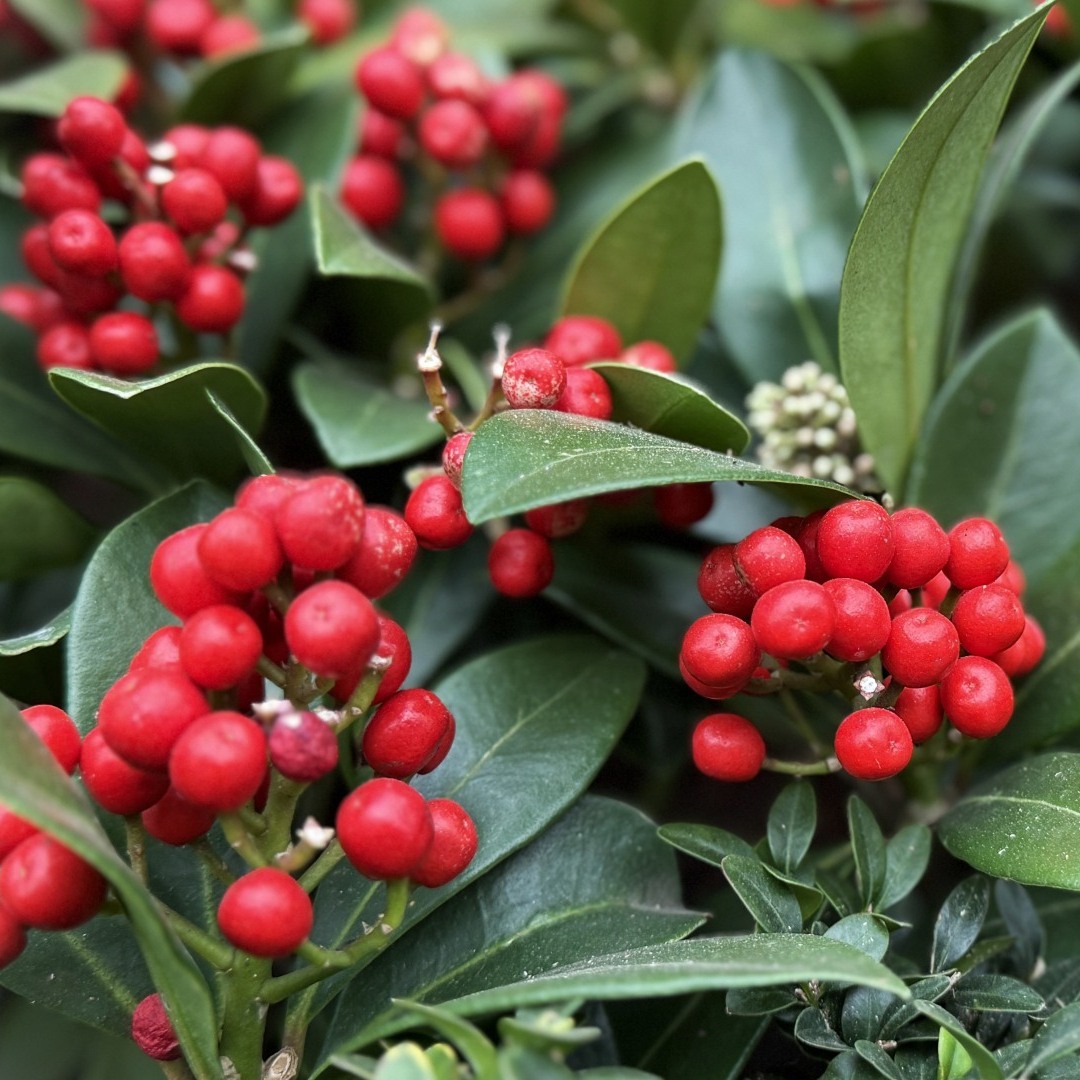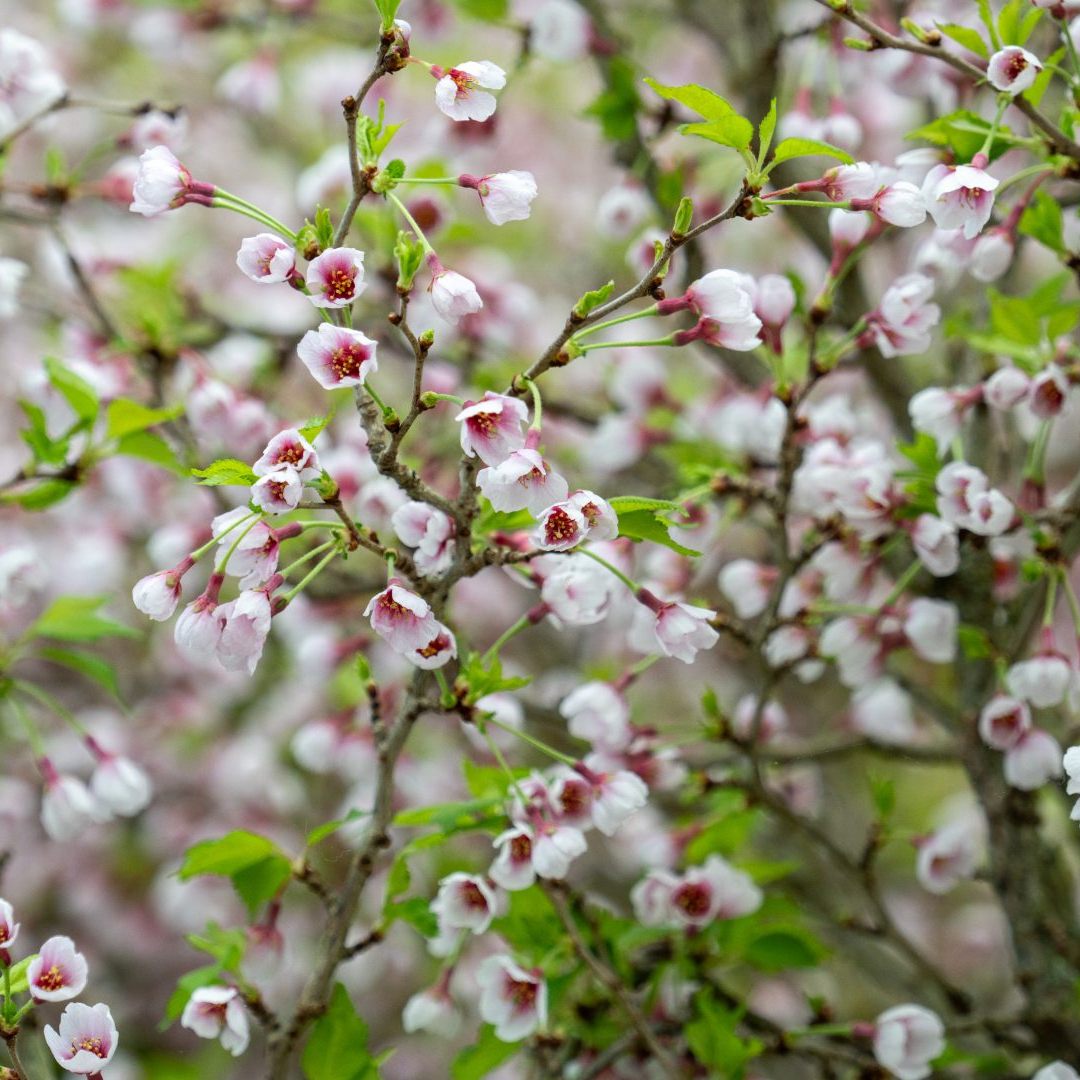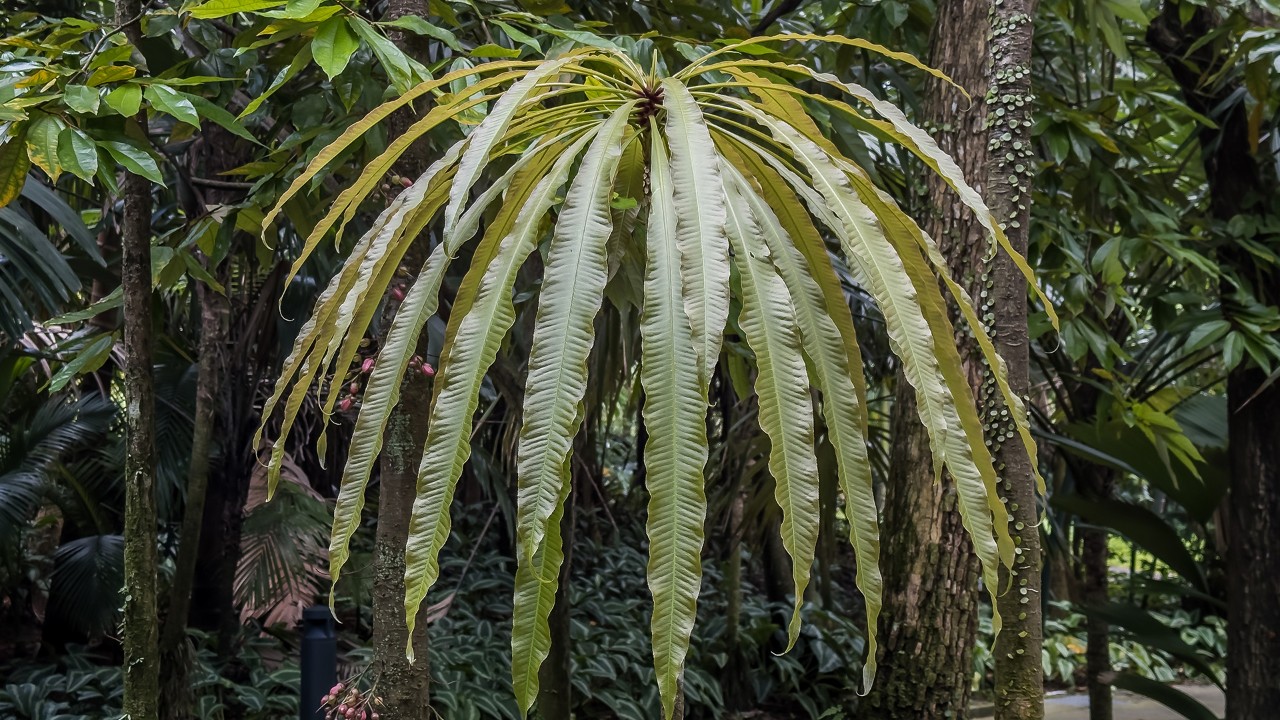 The lanceolate leaves of Barringtonia papuana.
The lanceolate leaves of Barringtonia papuana.
Barringtonia papuana, one of many Barringtonia species commonly known as the fish-killer tree, is currently in bloom! It is native to Papua New Guinea and is typically found growing in coastal regions or swampy areas. This species is a small tree that can grow up to 10 metres tall. It belongs to the family Lecythidaceae, which also includes the Brazil nut (Bertholletia excelsa) and the cannonball tree (Couroupita guianensis). If you walk through the World of Plants, you’ll notice the Cannonball tree too! Plants in this family are known to have large, showy flowers and distinctive fruits. Barringtonia papuana has lanceolate and glossy leaves, with its leaf colour ranging from red (new leaves) to green (mature leaves). It is known to have one of the most slender leaves in its genus as well. The genus Barringtonia, encompassing about 80 species, was named in honour of Daines Barrington, an English lawyer and naturalist (1727-1800).
![[From left to right] Barringtonia papuana flower buds developing in the daytime, and flowers blooming in the evening. The spent flowers are scattered on the base of the tree trunk!](/en/learn-with-us/explore-resources/whats-blooming/barringtonia-papuana/_jcr_content/root/container/container/container/image_1823018662.coreimg.jpeg/1679379819999/1920x1080px-barringtonia-papuana-02.jpeg) [From left to right] Barringtonia papuana flower buds developing in the daytime, and flowers blooming in the evening. The spent flowers are scattered on the base of the tree trunk!
[From left to right] Barringtonia papuana flower buds developing in the daytime, and flowers blooming in the evening. The spent flowers are scattered on the base of the tree trunk!
However, to admire the blooms of this species, you’d have to visit the gardens in the evening! The flowers of Barringtonia papuana open only in the evening, to attract nocturnal pollinators such as moths and bats. The inflorescences occur on the trunk of the tree, and bloom sequentially. The flowers are typically white or pink in colour, and borne in clusters. After blooming, the next morning, you’ll usually find the flower stamens and petals strewn beneath the tree. Similarly to its other relatives, many of the species in this genus are known to have showy, fragrant flowers!
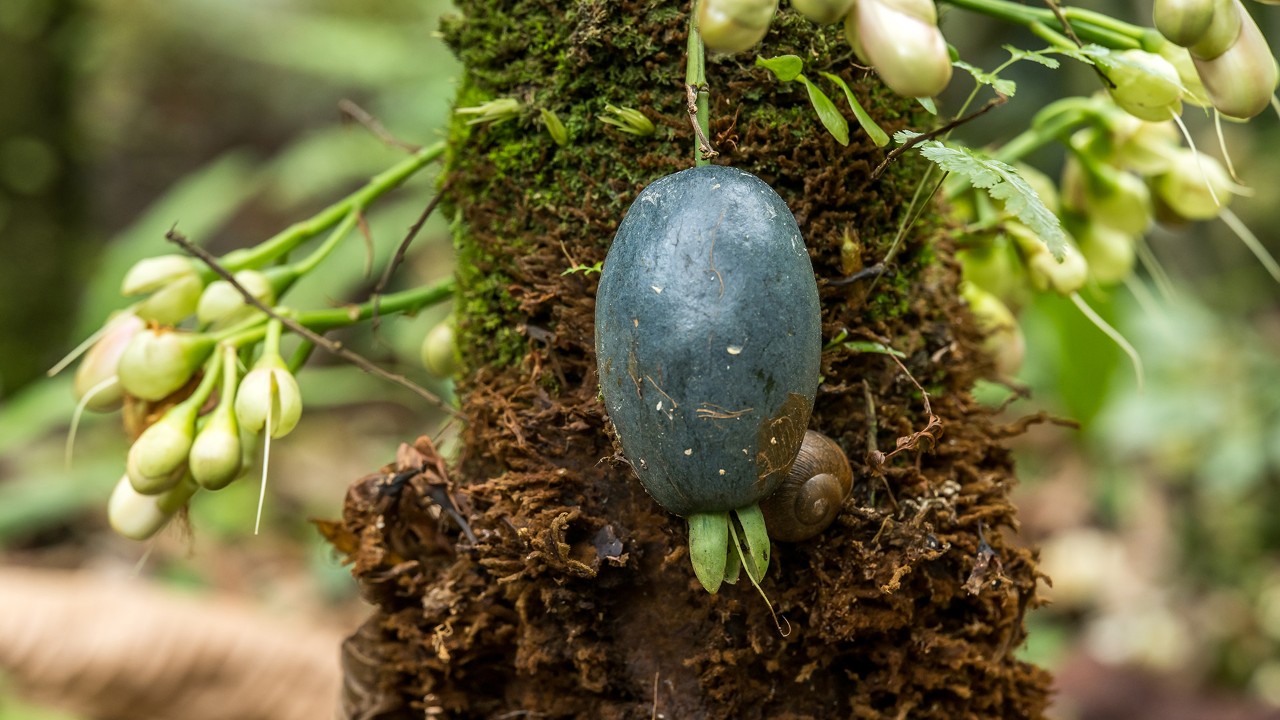 The ripened fruit of Barringtonia papuana.
The ripened fruit of Barringtonia papuana.
The fruit of Barringtonia papuana is ovoid, turning from green to bluish-black when ripened, and encases a nut-like seed. Dispersed by water, the seed can float for long distances, allowing the species to spread its range. One of its relatives, the putat laut (Barringtonia asiatica) can be found in another part of our outdoor gardens - Serene Garden and along Dragonfly Lake. If you walk along the boardwalk, you’d sometimes notice the fruits of Barringtonia asiatica floating in the water!
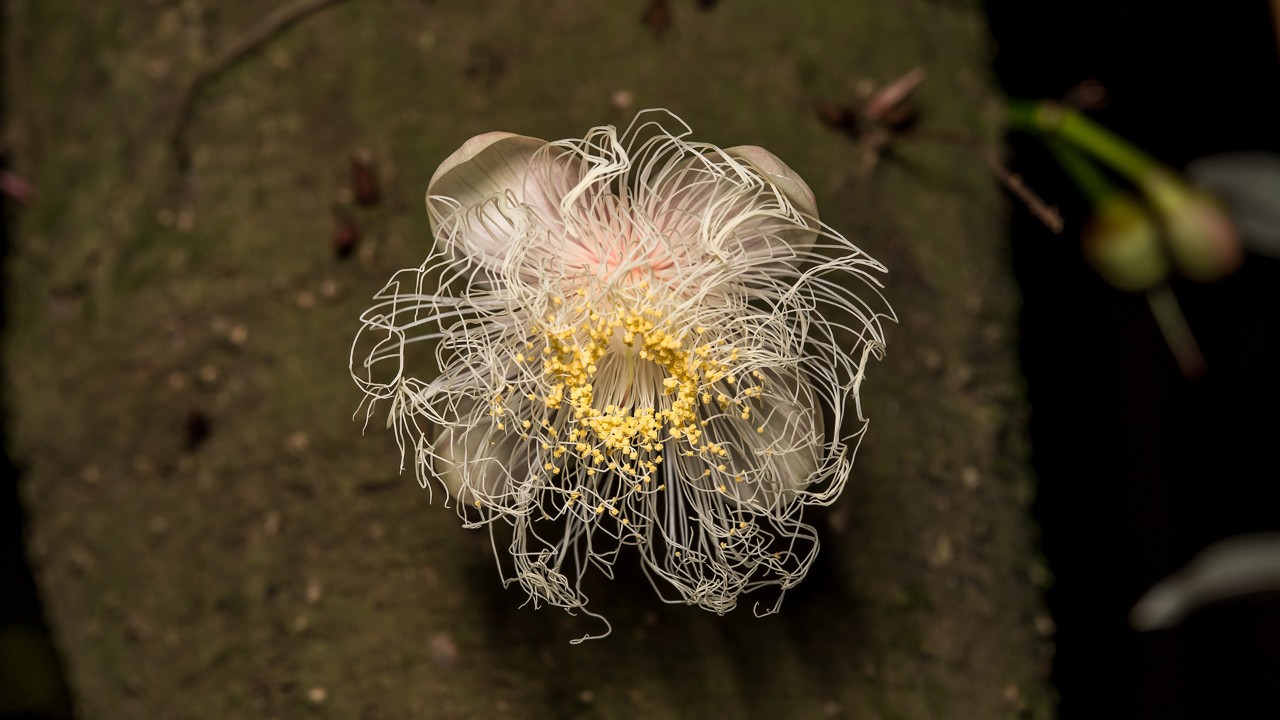 Close-up of the flower of Barringtonia papuana.
Close-up of the flower of Barringtonia papuana.
Other than its showy flowers, the bark of this species has a traditional use in the regions where it is found. Along with the fruits and seeds of other Barringtonia species, the bark is used as fish poison, as it contains saponins. The bark is crushed and then added to water, which stuns or kills fishes, allowing an easier catch. Throughout the Pacific region, this traditional way of fishing has been used for generations. Some species in the Barringtonia genus are also known to treat certain ailments like pain, fever and skin conditions. A tree of many uses indeed!
If you happen to be in the gardens at night, head over to the Understorey garden in World of Plants and catch a glimpse of these flowers in bloom!
Written by: Ng Yu Qin, Senior Horticulturist, Research and Horticulture
Yu Qin is always looking for ways to pick up new skills and put them to use. She spends most of her time with orchids and enjoys learning something new about them every day!
/1920x1080px-Teague%27s-Pleurothallis-1.jpg)
